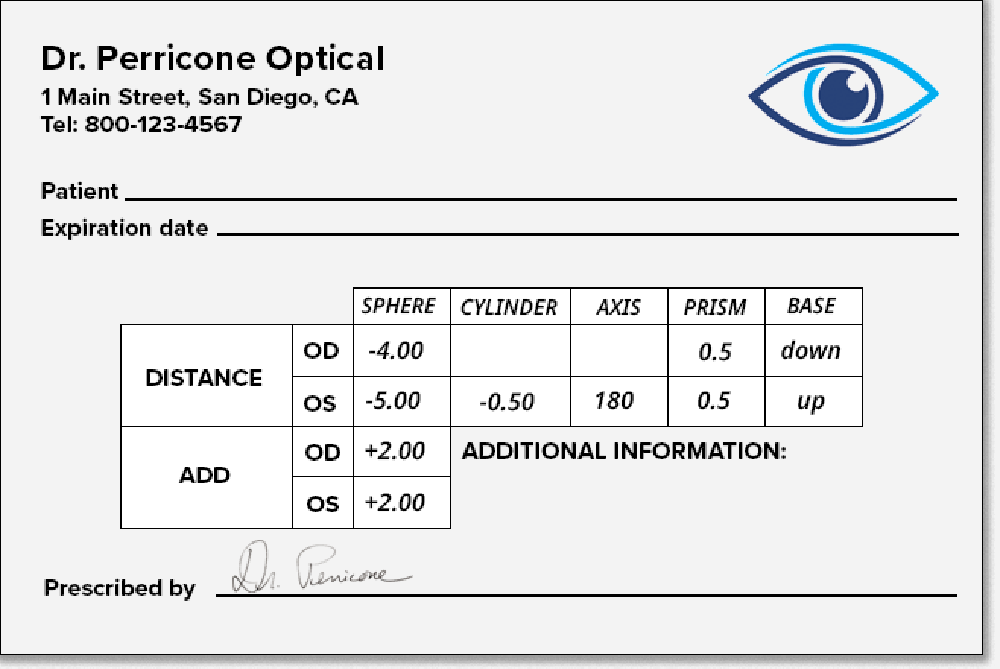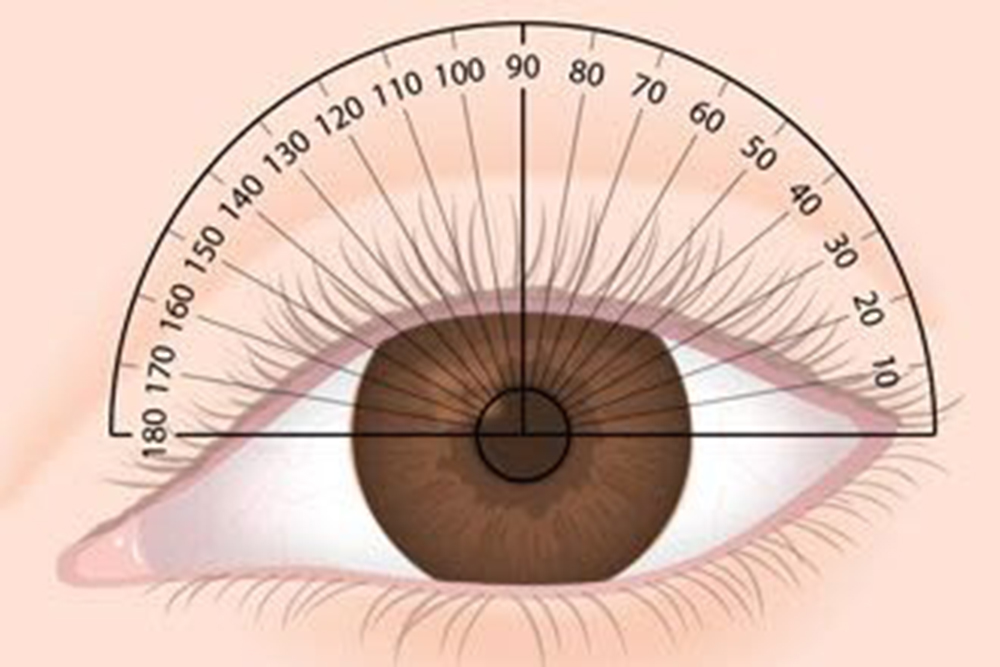The numbers on your eyeglass prescription relate to the shape of your eyes and strength of your vision. They can help you figure out whether you have nearsightedness, farsightedness or astigmatism — and to what degree.
If you know what to look for, you can make sense of the numbers and abbreviations on your prescription chart.
OD vs. OS: One for each eye
Eye doctors use the abbreviations “OD” and “OS” to denote your right and left eyes.
● OD is your right eye. OD is short for oculus dexter, the Latin phrase for “right eye.”
● OS is your left eye. OS is short for oculus sinister, Latin for “left eye.”
Your vision prescription may also have a column labeled "OU." This is the abbreviation for oculus uterque, which means "both eyes" in Latin. These abbreviated terms are common on prescriptions for glasses, contact lenses and eye medicines, but some doctors and clinics have opted to modernize their eye prescriptions by using RE (right eye) and LE (left eye) instead of OD and OS.

Sphere (SPH)
Sphere indicates the amount of lens power prescribed to correct nearsightedness or farsightedness. Lens power is measured in diopters (D).
● If the number under this heading comes with a minus sign (–), you are nearsighted.
● If the number under this heading has a plus sign (+), you are farsighted.
Cylinder (CYL)
Cylinder indicates the amount of lens power needed for astigmatism. It always follows the sphere power on an eyeglass prescription.
The number in the cylinder column may have a minus sign (for correction of nearsighted astigmatism) or a plus sign (for farsighted astigmatism).
If nothing appears in this column, you either don’t have astigmatism, or your degree of astigmatism is so small that it doesn’t need to be corrected.
Axis
Axis describes the lens meridian that contains no cylinder power to correct astigmatism.
If an eyeglass prescription includes cylinder power, it also needs to include an axis value, which follows the cylinder power.
The axis is defined with a number from 1 to 180.
● The number 90 corresponds to the vertical meridian of the eye.
● The number 180 corresponds to the horizontal meridian of the eye.

Add
“Add” is the added magnifying power applied to the bottom part of multifocal lenses to correct presbyopia — the natural farsightedness that happens with age.
The number appearing in this section of the prescription is always a "plus" power, even when you don’t see a plus sign. Generally, it will range from +0.75 to +3.00 D and will be the same power for both eyes.
Prism
This is the amount of prismatic power, measured in prism diopters ("p.d." or a triangle when written freehand), prescribed to compensate for eye alignment problems.
Only a small percentage of eyeglass prescriptions include a prism measurement.
When present, the amount of prism is indicated in either metric or fractional English units (0.5 or ½, for example), and the direction of the prism is indicated by noting the relative position of its "base" (thickest edge).
Four abbreviations are used for prism direction: BU = base up; BD = base down; BI = base in (toward the wearer's nose); BO = base out (toward the wearer's ear).
If you have further interests or need more professional information on optical lenses, please enter into our page through https://www.universeoptical.com/stock-lens/ to get more help.


